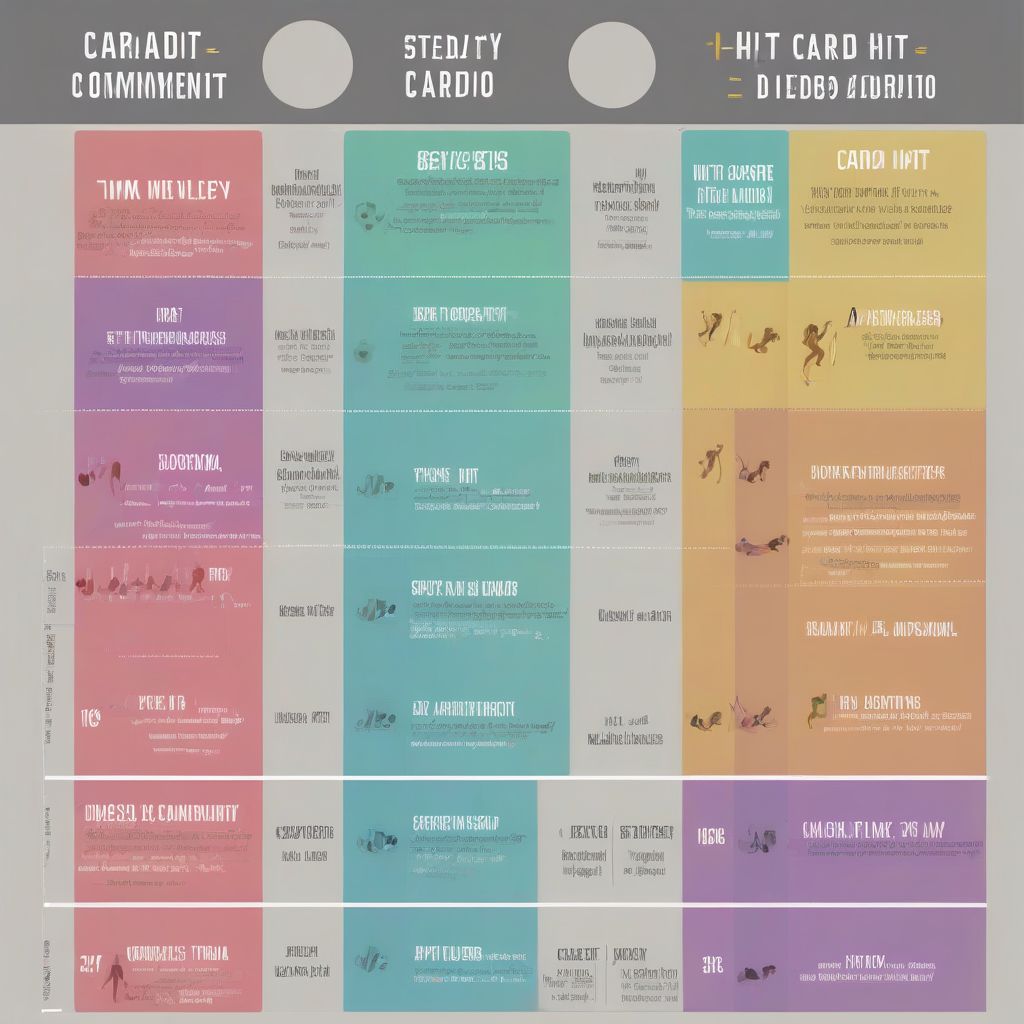Ever felt the rush of a heart-pumping workout, leaving you breathless and invigorated? That’s cardio, baby! But with so many options, it’s easy to get lost in the fitness jungle. Two popular contenders often battle it out: High-Intensity Interval Training (HIIT) and Steady-State Cardio. So, what’s the difference, and which one reigns supreme for your fitness goals? Let’s dive in and unravel the mystery.
Understanding the Cardio Landscape
Before we compare HIIT and steady-state cardio, let’s define what they are. Imagine a leisurely stroll versus sprinting to catch a bus – that’s the basic difference in a nutshell.
What is Steady-State Cardio?
Steady-state cardio involves maintaining a consistent pace and heart rate for an extended period. Think jogging, swimming laps, or cycling at a moderate intensity. Your breathing quickens, but you can still hold a conversation.
What is HIIT?
HIIT, on the other hand, is a rollercoaster of intensity. It involves short bursts of all-out effort followed by brief recovery periods. Picture sprinting for 30 seconds, then walking for a minute, and repeating this cycle for 20 minutes.
HIIT vs. Steady-State: Head-to-Head Comparison
Now that we’ve laid the groundwork, let’s compare these cardio powerhouses across several key factors:
Time Commitment
HIIT: Wins hands down in the efficiency department. You can achieve significant results in a shorter amount of time, making it perfect for busy schedules. A 20-minute HIIT session can be as effective as a longer steady-state workout.
Steady-State: Requires a larger time commitment, often ranging from 30 to 60 minutes.
Calorie Burn
HIIT: Burns more calories in a shorter amount of time, thanks to the “afterburn effect,” or Excess Post-exercise Oxygen Consumption (EPOC). Your body continues burning calories even after your workout is finished.
Steady-State: Burns calories primarily during the workout itself, with a less significant EPOC effect.
Muscle Building Potential
HIIT: While not a primary muscle builder, HIIT can contribute to muscle growth, especially when combined with strength training. Studies have shown that HIIT can improve muscle power and strength.
Steady-State: Primarily focuses on cardiovascular fitness, with minimal impact on muscle growth. However, some forms, like uphill running or cycling, can build lower body strength.
Impact on Joints
HIIT: Can be high impact, especially for beginners. Proper form and warm-up are crucial to avoid injury. Modifying exercises and using low-impact variations can reduce stress on joints.
Steady-State: Generally lower impact, making it suitable for people with joint issues or injuries. Activities like swimming or cycling are particularly gentle on the joints.
Health Benefits
Both HIIT and steady-state cardio offer numerous health benefits, including:
- Improved cardiovascular health: Strengthening your heart and lungs, reducing the risk of heart disease.
- Weight management: Burning calories and boosting metabolism.
- Reduced stress and anxiety: Releasing endorphins, mood-boosting chemicals.
- Improved sleep quality: Regulating sleep cycles and reducing insomnia.
Which Cardio Method Is Right for You?
The ideal choice depends on your individual fitness level, goals, and preferences.
Consider HIIT if:
- You’re short on time.
- You want to maximize calorie burn and boost metabolism.
- You enjoy intense, challenging workouts.
Consider Steady-State Cardio if:
- You’re new to exercise or recovering from an injury.
- You prefer longer, less intense workouts.
- You enjoy activities like running, swimming, or cycling.
“Remember, consistency is key, no matter which method you choose,” says renowned fitness expert, Dr. Sarah Johnson, author of “The Power of Habitual Fitness.” “Finding a form of cardio you enjoy will make it more sustainable in the long run.”
 HIIT vs. Steady-State Cardio Comparison Chart
HIIT vs. Steady-State Cardio Comparison Chart
Finding Your Perfect Cardio Rhythm
Ultimately, the best approach is to listen to your body and choose the method that aligns with your goals and preferences. You can even combine both HIIT and steady-state cardio for a well-rounded fitness routine. Experiment, find what works for you, and enjoy the journey to a healthier, happier you.
Conclusion: Your Cardio Compass
In this exploration of HIIT and steady-state cardio, we’ve uncovered their unique strengths and weaknesses, revealing how each can play a vital role in your fitness journey. Whether you prefer the short, intense bursts of HIIT or the rhythmic, sustained effort of steady-state, the key is to choose a method you enjoy and can stick with. Remember, consistency is the cornerstone of any successful fitness plan.
Embark on your cardio adventure armed with this knowledge, and discover the perfect rhythm for your body and your goals. Share your experiences in the comments below – we’d love to hear what works for you! Are you a HIIT enthusiast or a steady-state devotee? Let us know and join the conversation!



